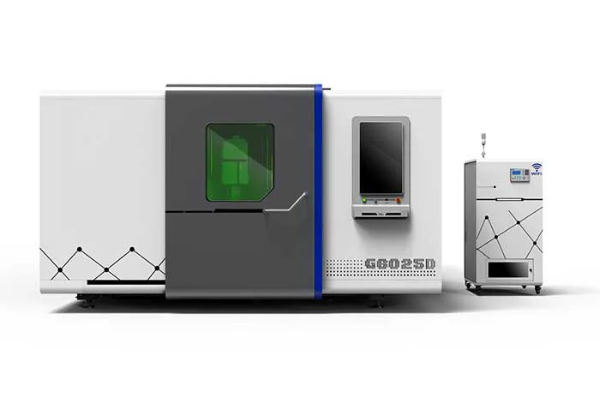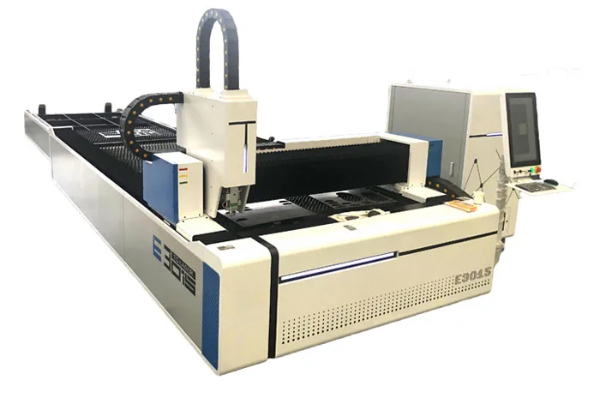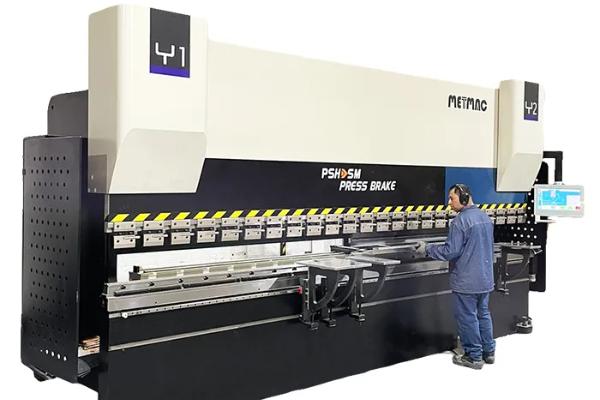
From Flat to Form- Unveiling the Power of Sheet Metal Press Brakes
- By:Metmac
- 2024-04-28
- 99
“From Flat to Form: Unveiling the Power of Sheet Metal Press Brakes” is an insightful article that delves into the capabilities and applications of sheet metal press brakes, revealing their transformative power in shaping the world around us. This article unveils the intricate process of converting flat sheet metal into intricate forms, showcasing the precision and versatility of these remarkable machines.
An Overview of Sheet Metal Press Brakes
Sheet metal press brakes are industrial machines that utilize a press to bend and form sheet metal into various shapes and configurations. The press consists of a punch and a die, which work in tandem to apply pressure and shape the metal sheet. Press brakes come in various sizes and capacities, catering to different sheet metal thicknesses and bending requirements.
The Bending Process
The bending process involves placing the sheet metal on the die and aligning it precisely. The punch then descends, applying force to the sheet metal and causing it to bend along the contours of the die. The amount of bending, known as the bend angle, is controlled by the press brake’s settings. The process is highly precise, ensuring consistent and accurate bends.
Materials and Applications
Sheet metal press brakes can handle a wide range of materials, including steel, aluminum, stainless steel, and copper. The versatility of these machines allows them to find applications in various industries, including automotive, aerospace, construction, and manufacturing. From intricate brackets to panels for electronic devices, press brakes play a crucial role in the production of countless components.
Advanced Features and Capabilities
Modern sheet metal press brakes incorporate advanced features and capabilities that enhance their performance and efficiency. These include:
– Computer Numerical Control (CNC): CNC controls allow press brakes to be programmed to precisely follow bending sequences, reducing errors and increasing productivity.
– Hydraulics: Hydraulic systems provide precise and consistent pressure, enabling the bending of even thick materials with ease.
– Laser Height Sensing: Laser height sensing systems automatically adjust the press brake’s height based on the sheet metal thickness, ensuring optimal bending results.
– Tooling: Press brakes can be equipped with a variety of tooling options, including V-dies and U-dies, to accommodate different shapes and bend angles.
Conclusion
In conclusion, “From Flat to Form: Unveiling the Power of Sheet Metal Press Brakes” offers a comprehensive overview of the capabilities and applications of these remarkable machines. Press brakes transform flat sheet metal into complex forms with precision and versatility, making them indispensable tools in various industries. With advanced features and capabilities, these machines continue to push the boundaries of metalworking, enabling the production of innovative and intricate components for a wide range of applications.
-
The Advantages of Using a Sheet Roll Forming Machine in Manufacturing
2024/09/14 -
How to Optimize Your Laser Sheet Cutting Machine for Maximum Performance
2024/09/12 -
How to Maximize Efficiency with Modern Sheet Metal Working Machines
2024/09/04 -
The Environmental Benefits of Using Duct Board Grooving Machines
2024/09/03
-
Efficient Sheet Metal Cutting Solutions for Every Application
2025/06/19 -
Advanced Sheet Metal Cutting Solutions with CNC and Plasma Technology
2025/06/19 -
Precision and Efficiency with Electrical Press Brake Machines
2025/06/19 -
High-Performance Sheet Metal Laser Cutting Machines for Precision Fabrication
2025/06/15
-
A Guide to the Latest Innovations in Sheet Metal Folding Machines
2024/11/29 -
Key Features to Consider When Investing in a Sheet Metal Folding Machine
2024/11/28 -
Enhancing Precision with Advanced Sheet Metal Folding Machines
2024/11/27 -
How to Choose the Right Sheet Metal Folding Machine for Your Workshop
2024/11/26



